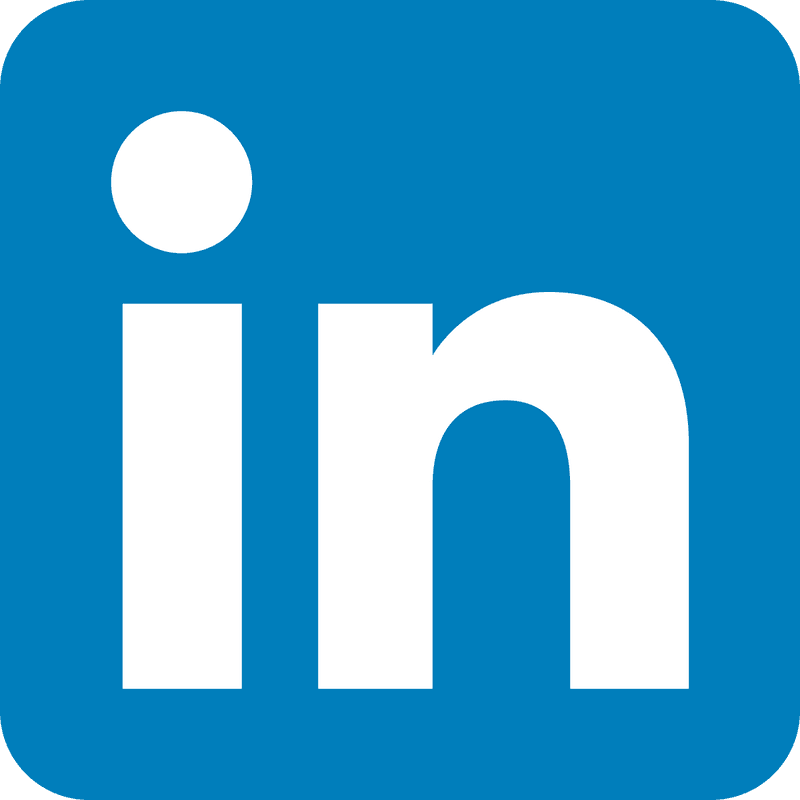
Introduction
The Microsoft tech stack refers to a comprehensive set of tools, frameworks, and technologies developed and maintained by Microsoft for building software applications across various platforms.
At its core, the stack provides developers with a cohesive ecosystem to create everything from mobile apps to desktop applications and web services.
Understanding the components of the Microsoft tech stack is crucial for .Net development and businesses alike.
With a diverse range of tools spanning frontend, backend, database, and infrastructure layers, familiarity with the Microsoft stack empowers developers to architect robust and scalable solutions customized to specific project requirements.
Furthermore, knowledge of the technological stack allows businesses to make use of cutting-edge technologies and industry-standard practices to stay competitive in today's digital landscape.
A deep understanding of the stack fosters collaboration and innovation, as developers can leverage the rich ecosystem of tools and resources to accelerate development cycles and deliver high-quality software solutions that meet the needs of end-users and stakeholders.
Frontend Technologies
Frontend technologies in the stack encompass a variety of tools and frameworks designed to facilitate the development of user interfaces for web and desktop applications. These technologies include:
- ASP.NET Core: A cross-platform, high-performance framework for building modern web applications using C# or F#.
- Blazor: A framework for building interactive web UIs using C# instead of JavaScript.
- Xamarin.Forms: A UI toolkit for building native mobile applications with a single codebase using C# or XAML.
- Windows Presentation Foundation (WPF): A framework for building Windows desktop applications with rich user interfaces using XAML and C# or VB.NET.
Frontend technologies play a critical role in shaping the UI/UX of software applications. They enable developers to create visually appealing, responsive, and interactive interfaces that enhance usability and engagement.
By leveraging frontend technologies in the Microsoft stack, developers can design intuitive navigation, implement dynamic content, and ensure consistent branding across different platforms.
Furthermore, frontend technologies facilitate seamless integration with backend services, enabling coherent and efficient data retrieval, processing, and presentation to users.
Overall, frontend technologies empower developers to create compelling user experiences that drive adoption and satisfaction among end-users.
Backend Technologies
There are plenty of Microsoft products that offer a range of backend technologies that power the logic and data processing aspects of software applications. These backend technologies include:
- ASP.NET Core: A versatile and high-performance framework for building web APIs and backend services using C# or F#. It provides robust support for routing, middleware, authentication, and data serialization.
- Entity Framework Core: An object-relational mapping (ORM) framework that simplifies database access and manipulation in .NET applications. It enables developers to work with databases using strongly-typed objects and LINQ queries.
- Microsoft Azure Stack Functions: Developers can run event-driven code without managing infrastructure because of the serverless computing service in the cloud. The service supports various programming languages, including C#, JavaScript, and Python, and scales automatically based on demand.
- Azure App Service: A fully managed platform-as-a-service (PaaS) offering for hosting web applications, APIs, and backend services in the cloud. It provides built-in support for deployment, scaling, monitoring, and security.
Among the myriad advantages of using components from Microsoft’s extensive technology stack, building robust applications that remain secure is paramount. A fundamental approach to achieving this includes leveraging Software Bill of Materials (SBOMs). By ensuring software integrity with SBOM, developers can gain visibility into components and dependencies within their systems, identifying potential vulnerabilities early in the development cycle. This aligns well with Microsoft stack’s focused strengths on providing scalable, reliable backend services that emphasize security.
Backend technologies in the Microsoft stack are responsible for implementing the application logic and handling data processing tasks. In industries like telecommunications, leveraging telecom BSS solutions can help streamline business operations and enhance customer service efficiency
They manage business rules, authentication, authorization, and data manipulation operations, ensuring the integrity and security of the application's data and functionality. By leveraging backend technologies, developers can create scalable, reliable, and performant backend services that meet the needs of modern applications.
These services handle requests from frontend clients, process data from various sources, interact with databases, and orchestrate complex workflows to deliver dynamic and responsive user experiences. Overall, backend technologies play a crucial role in driving the functionality, performance, and reliability of software applications built on Microsoft.
Database Technologies

Database technologies in Microsoft provide robust solutions for storing, managing, and querying data in software applications. These technologies include:
- SQL Server: A relational database management system (RDBMS) developed by Microsoft, offering advanced features for data storage, transactions, security, and scalability.
- Azure SQL Database: A fully managed cloud database service based on SQL Server, providing high availability, automatic backups, and built-in security features.
- Cosmos DB: A globally distributed, multi-model database service designed for building highly responsive and scalable applications. It supports multiple data models, including document, graph, key-value, and column-family, and offers guaranteed low-latency performance and high availability.
- Entity Framework Core: An object-relational mapping (ORM) framework that simplifies database access and manipulation in .NET applications, supporting various database providers, including SQL Server, MySQL, PostgreSQL, and SQLite.
Data storage and retrieval are essential aspects of backend development, enabling applications to store, retrieve, and manipulate data for various purposes.
Backend developers rely on database technologies to manage structured and unstructured data efficiently, ensuring data integrity, consistency, and security. Data storage solutions in the Microsoft stack offer scalability, reliability, and performance optimizations, allowing applications to handle large volumes of data and support user access.
Furthermore, efficient data retrieval mechanisms enable backend services to respond quickly to user queries and deliver dynamic content in real time. Overall, robust database technologies play a crucial role in backend development, serving as the foundation for building scalable and reliable software applications on the Microsoft stack.
Infrastructure Technologies
Infrastructure technologies in the Microsoft stack provide the foundation for hosting, deploying, and managing software applications. These technologies include:
- Azure: Microsoft's cloud computing platform offers a wide range of services for infrastructure as a service (IaaS), platform as a service (PaaS), and software as a service (SaaS).
- Azure DevOps is a set of cloud services for collaboration, development, and deployment of software applications. It offers tools for version control, continuous integration, continuous delivery, and automated testing, streamlining the development and deployment processes.
- Docker: A containerization platform that allows developers to package applications and their dependencies into lightweight, portable containers. Docker containers provide consistency and isolation across different environments, simplifying application deployment and management.
- Kubernetes is an open-source container orchestration platform for automating the deployment, scaling, and management of containerized applications. Its features, such as load balancing, auto-scaling, and self-healing, make it ideal for deploying and managing microservices-based architectures.
Deployment, scalability, and maintenance are critical considerations in application hosting, ensuring that applications are accessible, reliable, and performant.
Infrastructure technologies in the Microsoft stack enable seamless deployment of applications to cloud environments, allowing developers to quickly provision resources, configure environments, and deploy updates with minimal downtime.
Scalability features like auto-scaling and load balancing make sure that applications can handle increasing workloads and traffic spikes effectively. Additionally, robust monitoring and management tools provided by infrastructure technologies enable proactive maintenance, monitoring performance, identifying issues, and applying updates to ensure optimal application health and availability.
Overall, deployment, scalability, and maintenance are essential aspects of application hosting, enabling organizations to deliver reliable and responsive software solutions on the Microsoft stack.
Integration and Collaboration
In the intricate web of software, understanding how the diverse components of the stack intertwine is pivotal.
Picture a symphony in which front-end technologies harmonize with back-end services, are orchestrated by database technologies, and are hosted on infrastructure platforms.
Frontend frameworks like ASP.NET Core and Blazor communicate seamlessly with backend APIs powered by Azure Functions or ASP.NET Core. These backend services, in turn, interact with databases such as SQL Server or Cosmos DB to store and retrieve data.
The infrastructure layer, represented by Azure or Azure DevOps, provides the stage for this performance, ensuring reliability, scalability, and security.
Seamless integration acts as the adhesive binding the components of the stack together, fostering collaboration and coherence throughout the development process.
When components integrate smoothly, developers can focus their energy on innovation rather than grappling with compatibility issues. This cohesion streamlines workflows, accelerates development cycles, and minimizes downtime.
Moreover, seamless integration promotes cross-functional collaboration, enabling developers, designers, and stakeholders to work in tandem toward a shared vision. By eliminating silos and facilitating interoperability, seamless integration paves the way for the efficient development of software development, empowering teams to deliver exceptional solutions that exceed expectations.
To Sum It Up
In essence, the Microsoft technology stack is a robust ecosystem of tools and technologies designed to streamline software development.
From frontend frameworks to backend services and databases to infrastructure platforms, each component plays a vital role in shaping modern applications.
Understanding how these components integrate and collaborate is fundamental for developers and businesses alike. Seamless integration fosters efficiency, accelerates development cycles, and promotes collaboration across teams.
By harnessing the power of the Microsoft stack, developers can architect scalable, reliable, and innovative solutions. The Microsoft tech is more than just a collection of tools—it's a blueprint for success in software development.
FAQs
What are the technologies used in Microsoft?
Microsoft offers a diverse range of technologies across various domains, including the development of software, cloud computing, productivity, and more. Some prominent technologies developed by Microsoft include:
- .NET Framework and .NET Core: Frameworks for building Windows applications, web applications, and services using languages like C#, VB.NET, and F#.
- Azure: Microsoft's cloud computing platform offers a wide range of computing, storage, networking, and other services.
- SQL Server: A relational database management system (RDBMS) for storing and managing structured data.
- Visual Studio: An integrated development environment (IDE) for building, debugging, and deploying software applications.
- Office 365: This subscription service offers a suite of productivity tools, including Word, Excel, PowerPoint, and Outlook.
- Windows Server: An operating system for running server applications and services in data centers.
- PowerShell: A scripting language and command-line shell for automating administrative tasks and managing systems.
What is the concept of technology stack?
A technology stack, also known as a tech stack, refers to a combination of software tools, frameworks, programming languages, libraries, and infrastructure components used to build and run software applications. It typically consists of multiple layers, each serving a specific purpose in the application development process. Common layers in a technology stack include:
A technology stack, also known as a tech stack, refers to a combination of software tools, frameworks, programming languages, libraries, and infrastructure components used to build and run software applications. It typically consists of multiple layers, each serving a specific purpose in the application development process. Common layers in a technology stack include:
- Frontend: Responsible for the user interface and user experience of the application.
- Backend: Manages application logic, data processing, and interaction with databases.
- Database: Stores and retrieves data used by the application.
- Infrastructure: Provides the underlying foundation for hosting and deploying the application.Responsible for the user interface and user experience of the application.
- Backend: Manages application logic, data processing, and interaction with databases.
- Database: Stores and retrieves data used by the application.
- Infrastructure: Provides the underlying foundation for hosting and deploying the application.
What is Microsoft full stack developer?
A Microsoft full stack developer is a software developer who is proficient in working with the entire Microsoft stack, from frontend to backend and infrastructure. They are skilled in using Microsoft tech such as .NET Framework, ASP.NET, Azure, SQL Server, and Visual Studio to design, develop, deploy, and maintain software applications. A Microsoft full-stack developer is capable of handling various aspects of the application development lifecycle, including requirements gathering, design, implementation, testing, and deployment. They possess a deep understanding of Microsoft's ecosystem and leverage its tools and frameworks to build scalable, reliable, and efficient software solutions.




